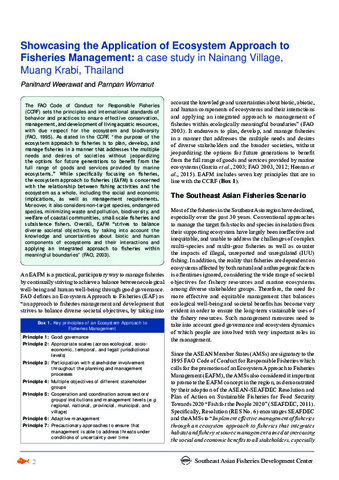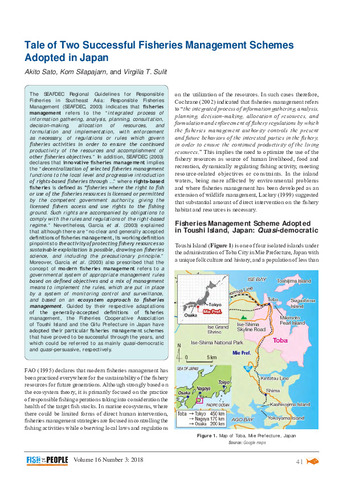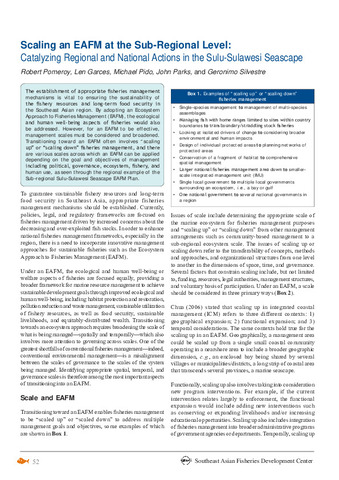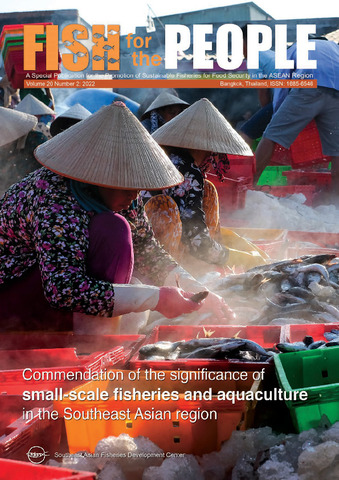Showcasing the application of ecosystem approach to fisheries management: A case study in Nainang Village, Muang Krabi, Thailand
Share
Abstract
The FAO Code of Conduct for Responsible Fisheries (CCRF) sets the principles and international standards of behavior and practices to ensure effective conservation, management, and development of living aquatic resources, with due respect for the ecosystem and biodiversity (FAO, 1995). As stated in the CCRF, “the purpose of the ecosystem approach to fisheries is to plan, develop, and manage fisheries in a manner that addresses the multiple needs and desires of societies without jeopardizing the options for future generations to benefit from the full range of goods and services provided by marine ecosystems.” While specifically focusing on fisheries, the ecosystem approach to fisheries (EAFM) is concerned with the relationship between fishing activities and the ecosystem as a whole, including the social and economic implications, as well as management requirements. Moreover, it also considers non-target species, endangered species, minimizing waste and pollution, biodiversity, and welfare of coastal communities, small-scale fisheries and subsistence fishers. Overall, EAFM “strives to balance diverse societal objectives, by taking into account the knowledge and uncertainties about biotic and human components of ecosystems and their interactions and applying an integrated approach to fisheries within meaningful boundaries” (FAO, 2003).
Suggested Citation
Weerawat, P., & Worranut, P. (2019). Showcasing the application of ecosystem approach to fisheries management: A case study in Nainang Village, Muang Krabi, Thailand. Fish for the People , 17(3), 2-7. http://hdl.handle.net/20.500.12066/5801
Subject
Collections
Related items
Showing items related by title, author, creator and subject.
-
Tale of two successful fisheries management schemes adopted in Japan
Sato, Akito; Silapajarn, Kom; Sulit, Virgilia T. (Secretariat, Southeast Asian Fisheries Development Center, 2018)The SEAFDEC Regional Guidelines for Responsible Fisheries in Southeast Asia: Responsible Fisheries Management (SEAFDEC, 2003) indicates that fisheries management refers to the “integrated process ofinformation gathering, ... -
Scaling an EAFM at the sub-regional level: Catalyzing regional and national actions in the Sulu-Sulawesi seascape
Pomeroy, Robert; Garces, Len; Pido, Michael; Parks, John; Silvestre, Geronimo (Secretariat, Southeast Asian Fisheries Development Center, 2018)The establishment of appropriate fisheries management mechanisms is vital to ensuring the sustainability of the fishery resources and long-term food security in the Southeast Asian region. By adopting an Ecosystem Approach ... -
Fish for the People Vol.20 No.2
Southeast Asian Fisheries Development Center (Secretariat, Southeast Asian Fisheries Development Center, 2022-10)





